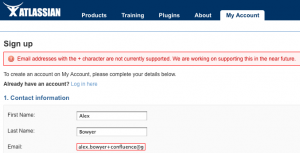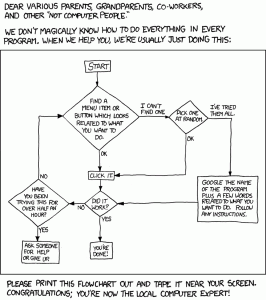Posts by admin
Finally, somebody notices the problem with Gmail “plus” labels
Most e-mail systems these days let you set up “disposable” e-mail
addresses, distinct from your main address which you can happily put
in sign up forms etc, without worrying about them being harvested by
spambots etc, as you can filter them to go straight to trash or
whatever should they abused. This is one example where Yahoo actually
does it better than Google, as they have a separate interface for
setting up and deleting these disposable addresses.
Gmail’s way of handling it is to let you append a label to your email
address, for example alex.bowyer+xyzco@googlemail.com would still come
through to my Gmail, but would automatically add the tag xyzco to the
mail, and I could optionally set up filters to treat it specially.
This also has the advantage that should xyzco pass my email address to
a third party, it’s clear who passed my address on.
Anyway this is all well and good, but there is a problem. Many (I
would say 40%) of websites that require an email address for sign up,
do not allow + as a valid character in an email address. And there’s
not a lot you can do about this. Use a different email
provider/address, or risk the company spamming you.
Which is why I breathed a sigh of relief when I signed up for
Confluence’s personal wiki and saw the alert shown – ok, they haven’t
fixed it yet, but the fact they’ve recognized the problem is a huge
step forward – it’s the first time I’ve seen any company notice this.
Of course, it would be better if Google just created a better way for
us to have disposable email addresses without having to use a
character that half the Internet thinks is illegal and expecting them
to change!
The secret is out – how to fix your own computer problem :-)
So true. This really is what we do :-)
Who says robots can’t move like humans can?
This video shows some incredible feats of robot dexterity.
How to recycle old plastic carrier bags into a messenger bag (or anything else!)
Here is another example of how open information, spread via the Internet, protected for all by Creative Commons licence, can lead to some very cool and unexpected things…
Check the MakeZine page for the project for more details.
How the Internet can get the benefits of scientific research out to the public faster
Here is a video of how technology that many people have in their home can be used in ways not intended by the manufacturer. This is interesting, but even more interesting is the wider trend this represents, as Johnny Lee describes – how the Internet and new media formats such as YouTube for video distribution can quickly spread ideas to thousands of people. Not just for persuasive purposes, but to do real good, allowing any teacher or parent to create their own interactive whiteboard using a Wii remote and some cheap hardware. Scientists are already starting to talk about how they can rethink the way research is done for this information-rich, hyper-connected age we live in. It’s really exciting that scientists might finally have a way to directly explain their work to the public without having to go through journalists who don’t always understand the science, or who are encouraged to take the most sensational angle.
Exciting times are ahead, I’m sure …





